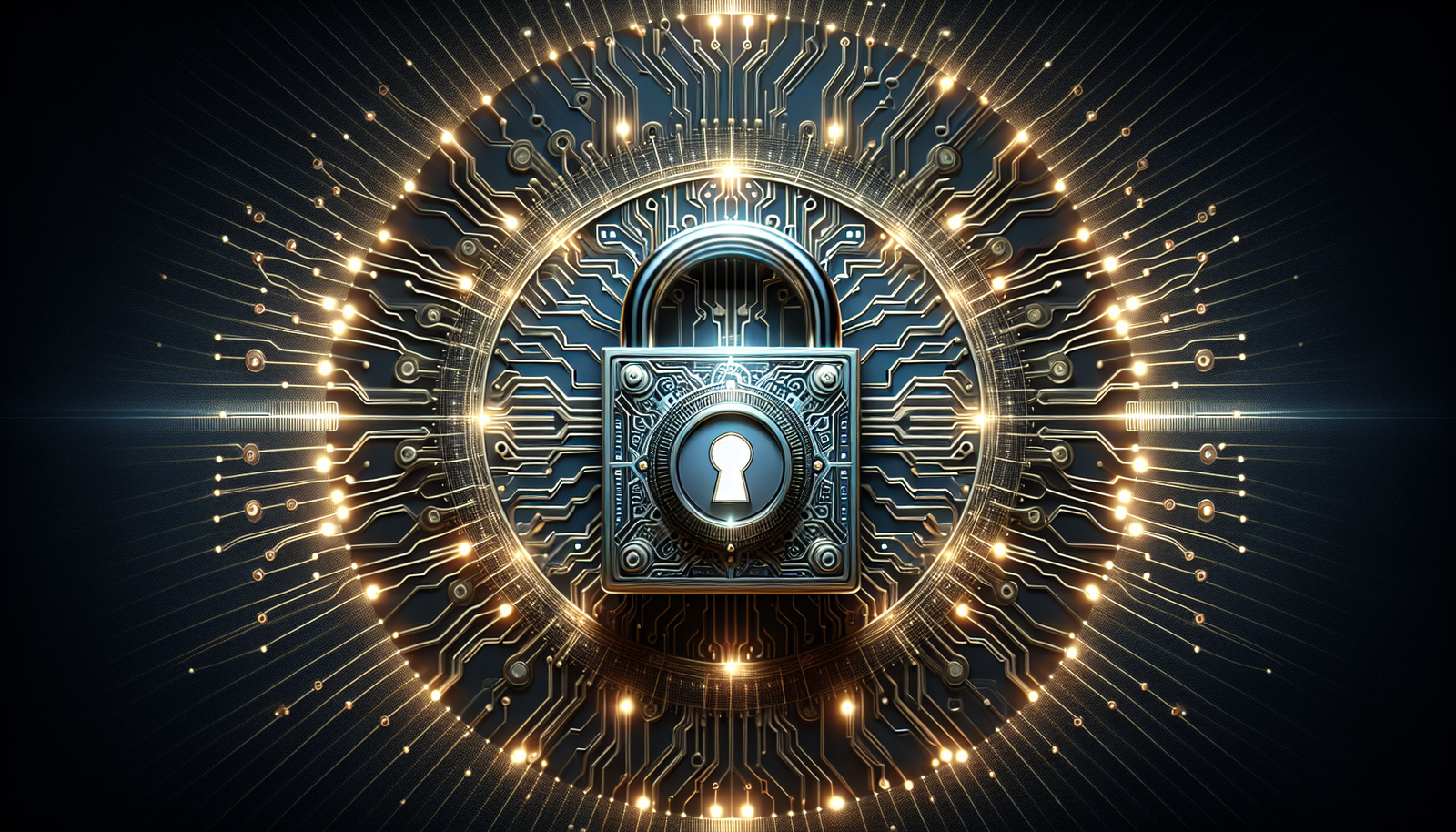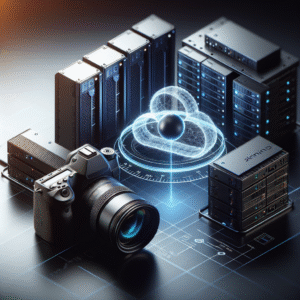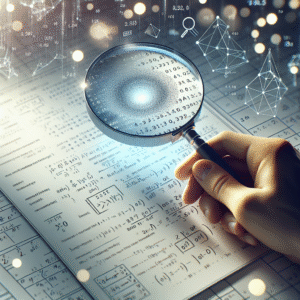Have you ever thought about how vulnerable our digital lives can be? With increasing reliance on technology, the need for robust cybersecurity has never been more critical. I want to share my insights on the future of cybersecurity in a world that is becoming more digital by the day.
Understanding Cybersecurity
Cybersecurity is the practice of protecting computers, servers, mobile devices, electronic systems, networks, and data from malicious attacks. I often think of it as a digital fortress, designed to guard personal and sensitive information against unauthorized access and threats. Given how integrated our lives have become with technology, understanding cybersecurity is essential for everyone.
The Rise of Cyber Threats
The digital age has given birth to a variety of cyber threats. From ransomware attacks that lock down sensitive data to phishing attempts that prey on unsuspecting users, the landscape of cyber threats is constantly evolving. The number of cybercrime complaints has surged, indicating that malicious entities are becoming increasingly sophisticated. I have read that global cybercrime damages are expected to reach trillions of dollars annually. This highlights the urgency for individuals and organizations to equip themselves with strong cybersecurity measures.
The Importance of Cybersecurity
In my opinion, cybersecurity is crucial not just for businesses and governments but also for everyday individuals. With the exponential increase in online activities—from banking to shopping—I realize that we are constantly exposing ourselves to potential threats. Having effective cybersecurity strategies in place can protect my personal information and contribute to a safer online environment for everyone.
Emerging Trends in Cybersecurity
As technology continues to advance, I notice some key trends emerging that will shape the future of cybersecurity.
Artificial Intelligence and Machine Learning
Artificial intelligence (AI) and machine learning are two of the most significant advancements in cybersecurity. These technologies can analyze vast amounts of data to detect anomalies and potential threats in real time. I find this fascinating because machine learning can adapt to new threats as they arise, making it a crucial tool for cybersecurity professionals.
Benefits of AI in Cybersecurity
- Automated Threat Detection: AI can analyze patterns and behaviors to identify and respond to threats much faster than human analysts.
- Reduced Response Time: With machine learning algorithms, organizations can triage and respond to threats in real time, which minimizes damage.
- Predictive Capabilities: AI tools can predict potential vulnerabilities based on data trends, allowing proactive measures to be taken.
The Internet of Things (IoT) and Its Vulnerabilities
The Internet of Things (IoT) continues to expand, connecting everyday objects to the internet. As I consider this, I realize that while IoT devices bring convenience, they also present unique cybersecurity challenges. Many of these devices lack robust security features, making them easy targets for attackers.
Securing IoT Devices
To ensure the safety of these devices, I believe implementing the following practices is essential:
- Change Default Passwords: Many IoT devices come with easily guessable default passwords. Changing these to strong, unique passwords can significantly enhance security.
- Regular Updates: Keeping device firmware up to date can close security gaps and protect against known vulnerabilities.
- Network Segmentation: I often think that separating IoT devices from critical networks can minimize risk by containing potential breaches.
Cybersecurity Regulations and Compliance
As someone who values digital security, I’ve realized that regulations play a critical role in shaping cybersecurity practices.
GDPR and Its Impact
The General Data Protection Regulation (GDPR) has set a high standard for data protection and privacy in Europe. I appreciate how it emphasizes transparency, providing individuals with greater control over their data. Organizations operating in or with the EU must abide by these regulations, making compliance essential.
Other Notable Regulations
- HIPAA: For healthcare organizations, the Health Insurance Portability and Accountability Act sets standards for protecting sensitive patient information.
- PCI-DSS: The Payment Card Industry Data Security Standard focuses on securing credit card transactions and protecting cardholder data.
I believe that compliance with these regulations not only protects consumers but also improves the overall security posture of organizations.
Cybersecurity Talent Gap
There is a notable shortage of skilled cybersecurity professionals, a challenge I find concerning as the demand for cybersecurity expertise grows.
The Skills Needed
In my observations, cybersecurity professionals need a diverse skill set, including:
- Technical Skills: Knowledge of networking, system administration, and programming languages.
- Analytical Skills: The ability to analyze patterns and data to identify potential threats.
- Soft Skills: Communication and problem-solving skills are essential for collaboration and response during a security incident.
Bridging the Talent Gap
To address this talent gap, I think several initiatives can be beneficial:
- Education and Training Programs: Investing in educational programs that focus on cybersecurity skills can nurture new talent.
- Mentorship Opportunities: Experienced professionals can guide newcomers, helping them gain real-world skills.
- Awareness Campaigns: Raising awareness of cybersecurity careers can attract a broader range of talent, especially from underrepresented communities.
Cybersecurity and Remote Work
The shift to remote work has changed the cybersecurity landscape significantly. I have noticed more organizations opting for flexible work arrangements, which brings both opportunities and risks.
Risks of Remote Work
With remote work, I’ve observed an increase in potential vulnerabilities, including:
- Unsecured Networks: Employees may connect to unsecured Wi-Fi networks that can be easily exploited by hackers.
- Phishing Attacks: As more communication takes place digitally, the risk of sophisticated phishing attempts increases.
- Device Security: Employees may use personal devices with inadequate security measures to access corporate resources.
Strategies for Securing Remote Work
To mitigate risks, I suggest the following strategies:
- Use of Virtual Private Networks (VPNs): A VPN encrypts online traffic, making it difficult for hackers to intercept data.
- Two-Factor Authentication (2FA): Implementing 2FA can add an extra layer of security when accessing sensitive accounts.
- Regular Security Training: Continuous training for employees can keep them informed about the latest threats and safe practices.
The Role of Cloud Security
As businesses increasingly move their operations to the cloud, I find cloud security crucial for protecting sensitive data.
Cloud Security Challenges
While cloud computing offers scalability and cost-efficiency, it also presents unique security challenges, including:
- Data Breaches: Unauthorized access to cloud-stored data can lead to significant damage.
- Misconfiguration: I often read how misconfigured cloud settings can leave data exposed to potential attacks.
- Shared Responsibility Model: Cloud service providers and customers both share the responsibility for securing data, necessitating clear communication and understanding.
Enhancing Cloud Security
To enhance security in the cloud, I recommend the following practices:
- Implement Strong Access Controls: Limiting access to sensitive data based on necessity can minimize exposure.
- Regular Security Audits: Regular assessments can identify potential vulnerabilities and ensure compliance with security standards.
- Encrypt Data: I believe that encrypting data both in transit and at rest protects it from unauthorized access.
Future Predictions for Cybersecurity
Looking ahead, I have some predictions regarding the future of cybersecurity.
Increased Investment in Cybersecurity
As cyber threats continue to grow, I expect organizations will prioritize cybersecurity budgets. I believe that this investment will lead to more advanced tools and technologies, improving overall security effectiveness.
The Importance of Resilience
I foresee an increased focus on building resilience within organizations. It’s no longer enough to simply prevent attacks; businesses must also be prepared to respond effectively should a breach occur. I think this may include developing incident response plans and conducting regular tabletop exercises.
Cybersecurity Awareness Culture
Another prediction is the growth of a cybersecurity awareness culture—an environment where everyone within an organization understands their role in protecting sensitive data. I feel this will empower employees to take an active part in their organization’s cybersecurity efforts.
Conclusion
Reflecting on all of this, I realize that the future of cybersecurity is a vast and dynamic landscape filled with challenges and opportunities. As technology continues to advance, so too must our approaches to security.
By understanding the importance of cybersecurity, staying ahead of emerging threats, and fostering a culture of awareness and resilience, I believe we can all contribute to a safer digital world. The journey to continuous learning and adaptation in cybersecurity is one I am committed to, and I hope to encourage you to join in that effort as well.






